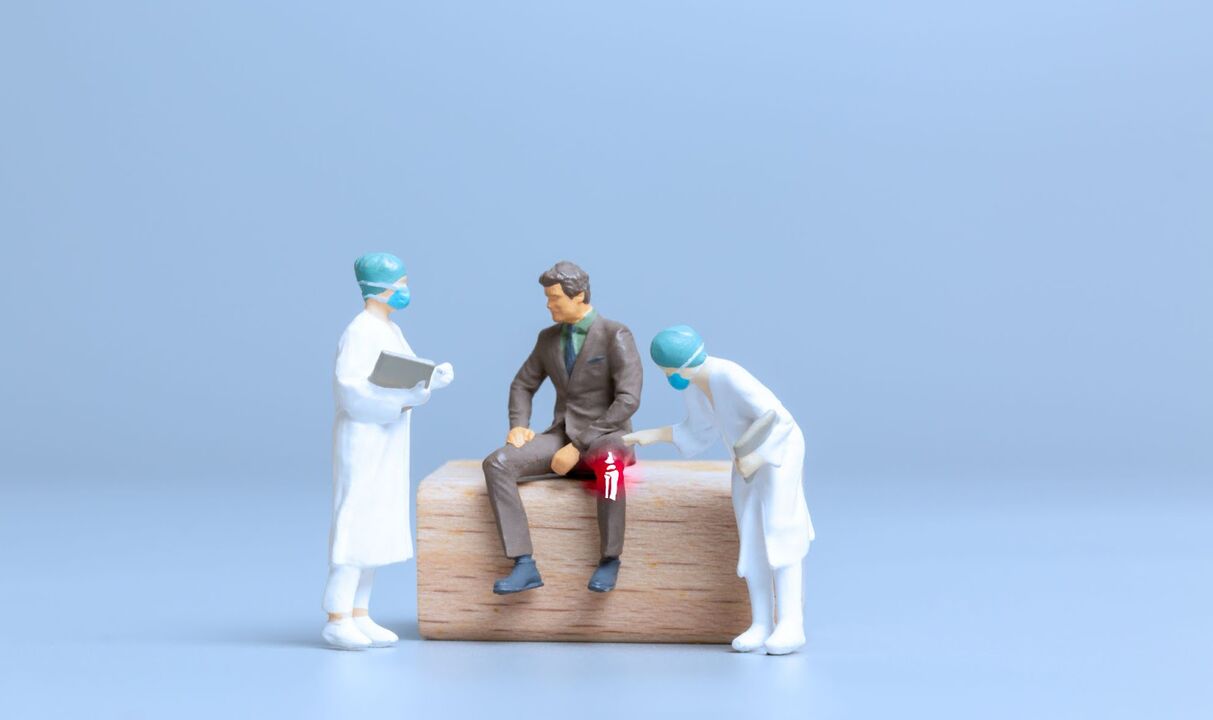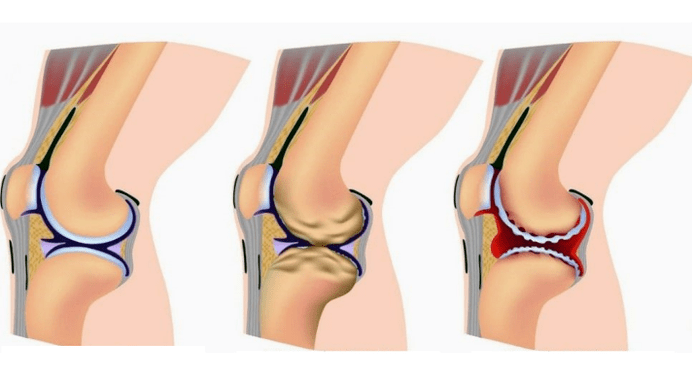Osteoarthritis and arthritis affect the joints and have similar symptoms. Because of this, they are often confused. Even their names agree, but these are completely different diseases. If arthrosis destroys the joints, then arthritis causes an inflammatory process throughout the body. This is the main difference between osteoarthritis and arthritis. Now in more detail.
The most important thing about arthritis
Arthritis is a progressive disease that is provoked by infection, immune system or metabolic disorders, hormonal disturbances. There are over 200 varieties. The main symptom of arthritis is inflammation in the joint area, swelling, redness of the skin. In an advanced form, the disease gives complications to the heart, kidneys and liver. People aged 25 to 40 are at risk.

Symptoms of arthritis
The disease can be hidden. The first signs of arthritis are usually:
- pain. It comes on suddenly and gets worse with movement. It is felt more intensely at night, stiffness is felt after sleep;
- Tissue changes. Arthritis is characterized by swelling and redness of the skin, synovitis and bursitis are possible (in the first case it is inflammation of the synovial membrane, in the second - the joint bag);
- Temperature rise. As a rule, the temperature rises in the affected joints. A high body temperature (38-39 degrees) can also be observed.
The symptoms exacerbate the manifestations of the inflammatory process:
- prostration;
- painful urination;
- chills;
- conjunctivitis.
If the symptoms are ignored, the disease will become chronic. As a result, the work of the internal organs will be disturbed, and the modification of the joints can lead to damage.
The most important thing about arthritis
Osteoarthritis is a non-inflammatory disease that leads to deformation and destruction of cartilage tissues. Cartilage covers the surface of the joint and prevents the bones from touching each other. When it is in order, the person moves freely and without pain. The causes of the pathology can be different: heredity, deviations in the structure of the joints, injuries, excessive loads. Unlike arthritis, the disease only affects the joints.
Osteoarthritis usually develops in older people as joint surfaces wear down with age. The disease also occurs in people who, by profession, put a lot of stress on the joints of the hands, wrists and feet. That is why arthrosis is also called "athletes' disease" or "pianists' disease".
Symptoms of arthritis
The disease is indolent. In the initial stage, symptoms may not appear. The first symptoms of osteoarthritis are usually the following:
- The joint is immobile after sleep or prolonged rest, but this quickly disappears on movement;
- Creaking, rattling, clicking - all this is accompanied by a dull sound;
- Pain on movement and exertion.
In the later stages of arthrosis, the symptoms are already noticeable: the joint becomes more immobile, pain appears and the "hard joint" syndrome develops - the soft cartilage tissue is replaced by bone growths. The development of the disease leads to immobilization of one or more joints.
Distinctive signs of arthritis and arthrosis

By carefully studying the symptoms and causes of arthrosis and arthritis, you can easily see the difference. We combined the disease differences to make this difference even more apparent.
feature |
arthrosis |
Arthritis |
affected area |
Joints, cartilages, interosseous spaces |
Joints, bones, internal organs: heart, liver, kidneys |
The nature of the disease |
Degenerate, destructive. Only the joints are affected |
Inflammatory. The disease affects the internal organs |
Common causes |
Increased load on the joints, heredity |
Severe infection, metabolic disorders |
Age |
It develops in people of mature or advanced age. Risk factor - activities related to excessive load on the joints |
It develops in people aged 25-40, but also occurs in adolescents and children |
pain |
Often this is a mild pain that occurs during movement and power loads. In the later stages, the pain becomes more intense. |
The pain intensifies when moving, it is most acutely felt early in the morning. |
Crunching and creaking |
Deaf clicks, a dry crunch or a squeak are characteristic |
It does not belong to the characteristics |
Deformation |
The joint is deformed, an inflammatory process appears |
There are seals, swelling, redness and fever in the joint area. Deformation occurs if one disease has developed into another. |
Reduced mobility |
Osteoarthritis binds only the affected joint. |
Stiffness in the whole body or in the joints |
Acute symptoms |
The joint "hardens" due to the formation of bone growths. In this case, the person can no longer move their legs or fingers. |
High temperature - 38-39 degrees, conjunctivitis develops, collapse and fever occur |
Development of symptoms |
It develops slowly, in the initial stage it is asymptomatic |
In the initial stage, there are symptoms of inflammation in the area of the affected joint. |
Prevention of arthritis and arthrosis
The disease is easier to prevent than to treat. Disease prevention includes:
- Moderate physical activity – fitness, swimming pool, skiing, cycling are suitable;
- Joint gymnastics - you can do it with an exercise trainer or stretch your joints at home;
- Proper nutrition - if there is a tendency to bone disease, it is worth giving up red meat and foods with a high fat content. It is better to add more fruits and vegetables, fish and seafood to the diet. If you are overweight, you must follow a diet;
- Drink enough water - 2 liters a day. It is recommended to give up alcohol.
To reduce the risk of illness, doctors recommend wearing comfortable shoes, not sitting cross-legged, not cooling down, and not succumbing to stress.
If you have symptoms similar to arthritis or arthrosis, make an appointment at our orthopedic center. These diseases significantly reduce the quality of life, so it is important to diagnose them in time and start treatment.















































